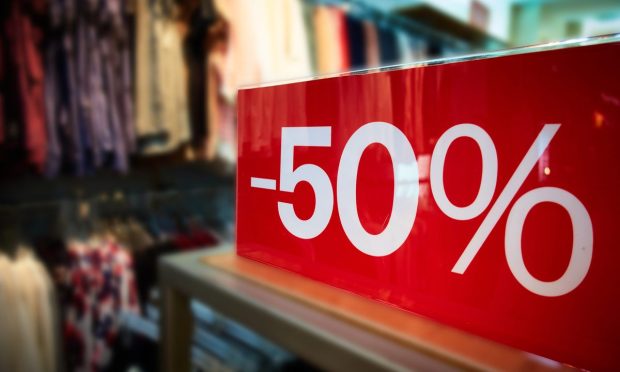Today in Retail: Amazon Plans Drone Fleet Launch; Mastercard SpendingPulse Predicts Back-to-School Retail Bounce

Today in retail, automation could reshape the consumer packaged goods (CPG) payment space, while retailers are restructuring their delivery models as markdowns loom. Plus, Lacoste launches UNDW3 Web3 experiential universe, and Zara limits free returns to in-store only.
Markdowns Drive Retailers to Reinvent Commerce’s Middle and Last Miles
A number of marquee names in commerce, including Target, Macy’s and Walmart, are getting shipments of the goods that were in high demand earlier in the COVID-19 pandemic, The Wall Street Journal reported Monday (June 13). Two years later, as those consumer electronics and furniture finally reappear on shelves — consumers have moved on to other things. That means discounts are on the horizon as the summer approaches.
The great reopening means furniture will be less in demand, as will loungewear. Big-ticket items will likely be set for a pullback as inflation continues to skyrocket. Some retailers, like Target, have already announced they’re planning big discounts. Others with robust warehouse capacity, like Walmart, may be more likely to hold on to excess inventory, analysts say.
Amazon Answers Walmart’s Drone Push With Limited Launch Later This Year
Three weeks after Walmart announced plans to offer drone delivery service to 4 million households in six states, rival Amazon is out with an aerial answer of its own, albeit on a much more limited scale.
In a blog post published late Monday (June 13), Amazon said the initial Prime Air drone delivery service is not set to take flight until “later this year” and will be limited to customers in Lockeford, California, a rural community about 90 miles west of San Francisco.
The move also comes at a time when individuals and businesses are looking for ways to reduce driving time — especially in California, where the AAA reports the average price of regular gasoline is now $6.43 per gallon, about 30% higher than the national average of $5.01.
Lacoste Debuts Web3-Based UNDW3 Experiential Universe
Lacoste has launched UNDW3 (pronounced as “underwater”), its first Web3 experience and a progression from its collaboration with Minecraft that saw an immersive projection of the fashion retailer in the Croco Island virtual world.
UNDW3 “will allow the communities of the brand … to participate, collectively and actively, in the embodiment of its Fashion-Sport vision,” the company press release stated. The retailer’s Web3 “renews the customer and brand experience by allowing community members to take ownership of Lacoste in a new creative way.”
Lacoste launched its dedicated discord server last week, giving members real-time updates on the development of the brand’s Web 3 universe. The company is also selling 11,212 non-fungible tokens (NFTs) featuring Lacoste’s emblematic crocodile emerging from the water, the release stated. The number refers to the iconic L1212 polo shirt invented by Lacoste founder René Lacoste.
Mastercard SpendingPulse: Back-to-School Retail Sales May Grow 7.5% in 2022
While many recent retail spending reports show consumers tightening their belts and focusing their spending on food, gas and other necessities, the Mastercard SpendingPulse report for May shows a 10.5% year-over-year retail sales growth for the month — and more good news ahead.
SpendingPulse, which measures non-adjusted in-store and online retail sales across all forms of payments, forecast a 7.5% growth in U.S. retail sales from mid-July through Labor Day during the so-called back-to-school shopping period.
Mastercard Spending Pulse sees in-store experiences, a continued rebound of department stores and busy social calendars leading to more apparel sales as the top trends heading into the back-to-school shopping season.
Zara Limits Free Returns to In-Store Only, Reports No Impact on Sales
Like the retail industry itself, the longstanding “free shipping, free returns” eCommerce business model is in the throes of evolution.
After normalizing and nurturing the growth of online apparel shopping for the past 20 years, a mix of rising expense, inventory disruption and environmental impacts is causing more retailers to rethink a policy that has served them well, but also cost them dearly.
The latest big-name player to revise its policy is fast fashion giant Zara, which is now limiting free returns to in-store only.
CPG Manufacturers and Retailers Seek to Sync-Up on Pricing With Automation
Getting paid what is invoiced is among the most basic functions of finance. The amount billed offers visibility to the seller, allowing them to plan for money to be paid by buyers and to be paid out to cover expenses. Visibility is critical for strategic planning — and for matching cash flow to obligations.
That visibility is often lacking for the brands, both large and small, that make the products that wind up on retailers’ shelves and are ultimately bought by consumers. Dash Bibhudatta, vice president and general manager at Inmar Intelligence, told PYMNTS in an interview that deductions can wreak havoc with consumer packaged goods (CPG) makers’ planning — and margins too.
Deductions occur when retailers pay less than they owe to brands, said Bibhudatta. It’s a standard practice in the industry for retailers to get invoices from brands, but then opt to deduct amounts for goods damaged before arrival, for shipping delays and perceived billing errors.
